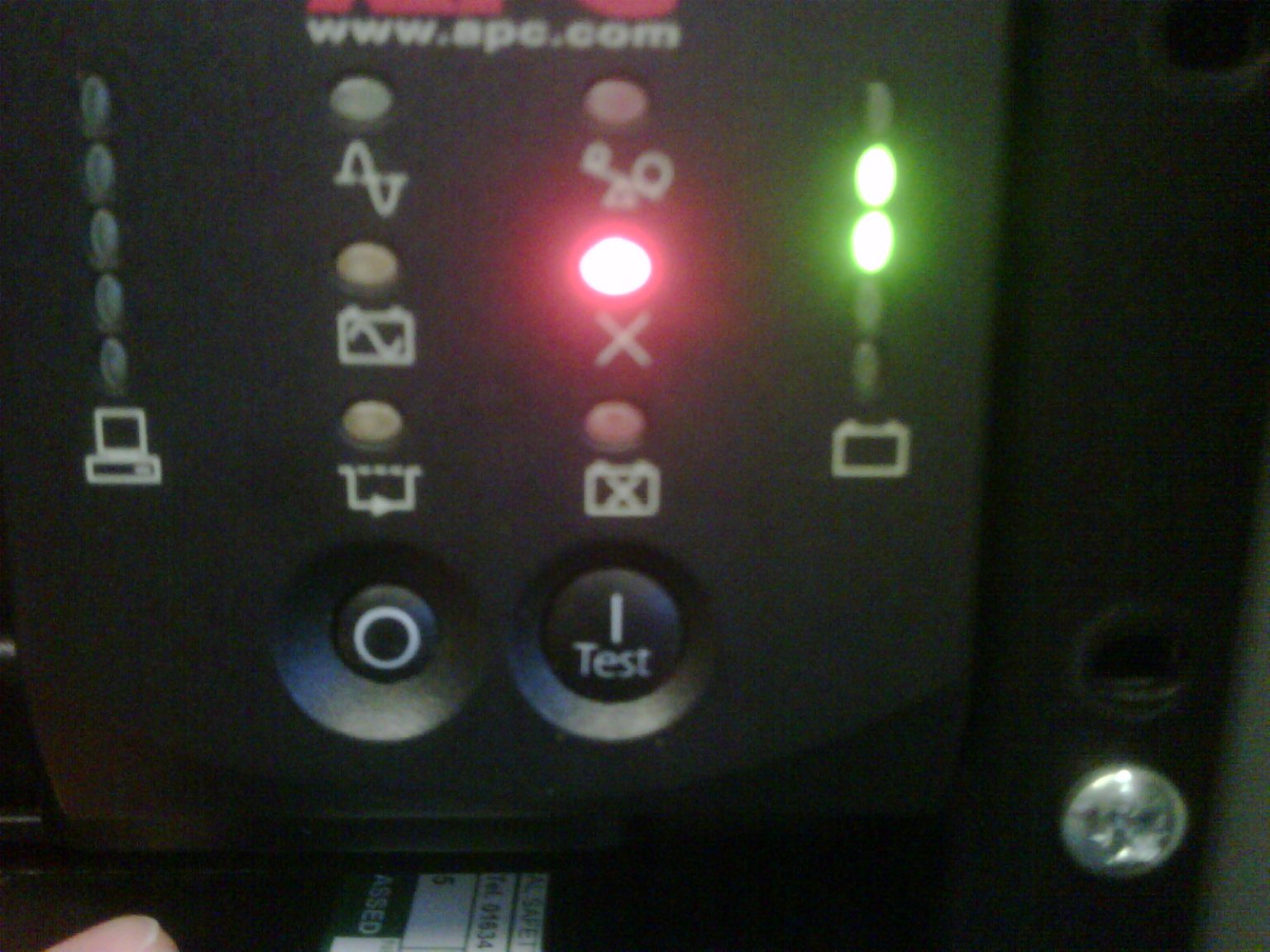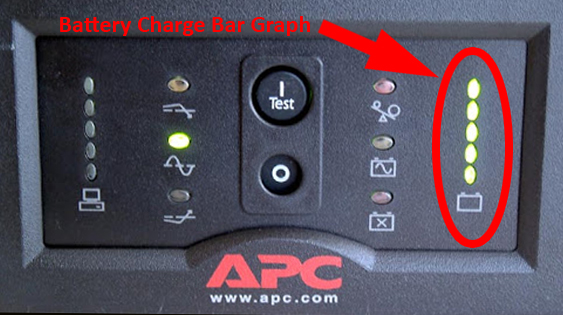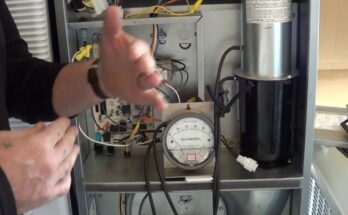To troubleshoot an APC UPS, first check the power source and battery connections. Next, review the LED indicators and error messages.
APC UPS systems are essential for protecting electronic equipment from power disruptions. Proper troubleshooting can extend their lifespan and ensure continuous protection. Start by examining the power source and battery connections, ensuring they are secure and functional. LED indicators and error messages provide valuable insights into potential issues.
Regular maintenance, including battery health checks and firmware updates, can prevent common problems. Understanding these basics helps keep your APC UPS running smoothly, safeguarding your devices against unexpected power outages. For more detailed troubleshooting steps, refer to the user manual or contact APC support.

Credit: community.se.com
Introduction To Apc Ups
APC UPS stands for American Power Conversion Uninterruptible Power Supply. It protects your electronics during power outages. An APC UPS ensures your devices stay on, even when the power goes out. This can save important data and prevent hardware damage.
Knowing how to troubleshoot an APC UPS is crucial. This guide will help you understand its purpose, benefits, and common models.
Purpose And Benefits
The main purpose of an APC UPS is to provide backup power. It also offers surge protection. This keeps your devices safe from power spikes. Here are some key benefits:
- Prevents data loss
- Protects hardware from damage
- Provides temporary power during outages
- Reduces downtime
These benefits make APC UPS a valuable tool for both homes and businesses.
Common Models
APC offers various UPS models. Each model caters to different needs. Here are some of the most common models:
| Model | Capacity (VA) | Features |
|---|---|---|
| APC Back-UPS 600 | 600 VA | Basic backup and surge protection |
| APC Smart-UPS 1500 | 1500 VA | Advanced power management and monitoring |
| APC Symmetra LX | 16 kVA | Scalable power protection for data centers |
Choosing the right model depends on your needs. Consider the devices you want to protect.
Battery Issues
Battery issues are common with APC UPS systems. These problems can reduce efficiency and cause unexpected shutdowns. Addressing these issues promptly can extend the lifespan of your UPS.
Battery Not Charging
One common problem is the battery not charging. This issue can be due to various reasons:
- Loose Connections: Check all battery connections. Ensure they are secure and clean.
- Faulty Charger: The charger might be faulty. Test it with a multimeter.
- Old Battery: Batteries have a limited lifespan. An old battery might not charge.
If the battery is not charging, consider replacing it. A fresh battery can solve many issues.
Short Battery Life
Another issue is short battery life. The UPS may not hold a charge for long. This problem can arise due to:
- Overloading: Ensure the UPS is not overloaded. Excess load shortens battery life.
- High Temperatures: High temperatures reduce battery efficiency. Keep the UPS in a cool place.
- Frequent Discharges: Frequent discharges wear out the battery. Try to minimize them.
To extend battery life, follow these tips:
- Keep the UPS in a cool, dry place.
- Avoid overloading the UPS.
- Replace old batteries promptly.
| Issue | Possible Cause | Solution |
|---|---|---|
| Battery Not Charging | Loose Connections | Secure and Clean Connections |
| Battery Not Charging | Faulty Charger | Test with Multimeter |
| Short Battery Life | Overloading | Reduce Load |
| Short Battery Life | High Temperatures | Keep in Cool Place |
Power Problems
Facing power issues with your APC UPS can be frustrating. These problems can disrupt your workflow and damage your devices. Let’s dive into common power problems and how to troubleshoot them.
No Power Output
When your APC UPS shows no power output, check the following:
- Check Connections: Ensure all cables are securely connected.
- Verify Power Source: Make sure the UPS is plugged into a working outlet.
- Test Outlet: Use another device to check if the outlet works.
- Check Circuit Breaker: Ensure the breaker is not tripped.
If the above steps don’t solve the issue, consider replacing the battery. Batteries can wear out over time. Also, inspect for any visible damage on the UPS.
Frequent Power Drops
Frequent power drops can be a sign of an underlying issue. Follow these steps:
- Check Load: Ensure the UPS isn’t overloaded. Disconnect some devices if necessary.
- Battery Health: Use the UPS software to check battery status.
- Environment: Ensure the UPS is in a cool, dry place. Overheating can cause power drops.
If the problem persists, update the UPS firmware. Firmware updates can fix bugs and improve performance. Also, consider consulting the user manual for specific troubleshooting steps related to your model.
| Problem | Possible Cause | Solution |
|---|---|---|
| No Power Output | Loose Connections | Secure all cables |
| Frequent Power Drops | Overloaded UPS | Disconnect some devices |
By following these steps, you can resolve most power problems with your APC UPS. Keeping your UPS in good condition ensures your devices stay protected.
Overload Conditions
Overload conditions in APC UPS systems can be troubling. They disrupt your workflow and cause unexpected downtime. Understanding and addressing these issues is crucial for maintaining a stable power supply.
Identifying Overload
To address overload conditions, you first need to identify them. Look for the following signs:
- UPS Alarm: A continuous beep indicates an overload.
- Display Warning: The UPS display shows an overload message.
- Frequent Shutdowns: The UPS turns off unexpectedly.
Check the load percentage on the UPS display. If it exceeds 100%, you have an overload condition.
Preventing Overload
Preventing overload conditions is crucial for the longevity of your UPS. Follow these steps:
- Distribute Load Evenly: Ensure devices are evenly distributed across outlets.
- Use Power Strips Wisely: Avoid daisy-chaining multiple power strips.
- Monitor Power Consumption: Regularly check the power usage of connected devices.
Below is a table showing the recommended load percentages for different UPS models:
| UPS Model | Recommended Load (%) |
|---|---|
| APC Smart-UPS 750VA | 80% |
| APC Smart-UPS 1500VA | 70% |
| APC Smart-UPS 3000VA | 60% |
Following these guidelines helps in maintaining optimal performance and prevents overload conditions.
Alarm And Indicator Lights
Understanding the alarm and indicator lights on your APC UPS is crucial. These features help you diagnose and troubleshoot issues. This section breaks down the alarm sounds and LED indicator meanings to simplify your troubleshooting process.
Understanding Alarm Sounds
APC UPS units use distinct alarm sounds to indicate different issues. Recognizing these sounds can help you fix problems quickly.
- Continuous Beep: This indicates a problem with the battery.
- Intermittent Beep: This signifies that the UPS is running on battery power.
- Rapid Beeping: This warns of an imminent shutdown due to low battery.
Led Indicator Meanings
The LED indicators on your APC UPS provide visual cues about its status. Understanding these lights can help you maintain your unit effectively.
| LED Light | Meaning |
|---|---|
| Green Light | The UPS is operating normally. |
| Amber Light | The UPS is running on battery power. |
| Red Light | There is a problem with the UPS. |
By understanding these alarm sounds and LED indicators, you can keep your APC UPS in top shape. This knowledge will help you respond to issues quickly and effectively.
Software And Connectivity
Ensuring your APC UPS operates smoothly requires attention to software and connectivity. This section will guide you through common issues and solutions.
Connection Issues
Connection issues can disrupt your APC UPS functionality. Follow these steps to resolve them:
- Check the cable connections. Ensure all cables are firmly plugged in.
- Verify that the UPS and the computer are on the same network.
- Restart both the UPS and the computer to refresh the connection.
Sometimes, using a different cable can solve the problem. Always use the recommended cables for your APC UPS.
Software Errors
Software errors can prevent your APC UPS from functioning correctly. Here are some common solutions:
- Update the UPS software to the latest version.
- Ensure your computer’s operating system is compatible with the UPS software.
- Check for any conflicting software that might interfere with the UPS software.
If errors persist, reinstall the software. Uninstall the current version, then download and install the latest one from the official website.
Below is a table with common software errors and their solutions:
| Error Code | Solution |
|---|---|
| E01 | Update the software. |
| E02 | Check for software conflicts. |
| E03 | Reinstall the software. |
Ensure your APC UPS remains connected and updated. Follow these tips for seamless operation.
Environmental Factors
Environmental factors play a crucial role in APC UPS performance. Both temperature and humidity can affect the unit. Keeping the right environment ensures your UPS works perfectly.
Temperature Sensitivity
APC UPS units are sensitive to temperature changes. Always keep the room temperature between 20-25°C (68-77°F). High temperatures can reduce battery life.
In contrast, low temperatures can cause battery charging issues. Use a thermometer to monitor temperature regularly.
| Temperature (°C) | Effect on UPS |
|---|---|
| Below 20°C | Charging issues |
| 20-25°C | Optimal performance |
| Above 25°C | Reduced battery life |
Humidity Concerns
Humidity can also impact APC UPS functionality. Ideal humidity levels are between 30-50%. High humidity can cause corrosion inside the unit.
Low humidity can lead to static electricity issues. Use a hygrometer to check humidity levels frequently.
- 30-50% – Optimal humidity
- Above 50% – Risk of corrosion
- Below 30% – Risk of static electricity

Credit: community.se.com
Maintenance Tips
Regular maintenance of your APC UPS ensures its longevity and reliability. Proper care prevents unexpected failures, keeping your devices safe. Follow these maintenance tips to keep your UPS in top shape.
Regular Checks
Performing regular checks on your APC UPS is crucial. Inspect the unit for any signs of wear and tear. Check the battery status and replace if necessary. A healthy battery ensures uninterrupted power supply.
Keep the UPS clean and free from dust. Dust can cause overheating and damage the components. Use a soft cloth to wipe the exterior.
| Check | Frequency |
|---|---|
| Battery Status | Monthly |
| Connections | Monthly |
| Dust Cleaning | Quarterly |
Firmware Updates
Keeping the firmware updated is essential for optimal performance. Firmware updates fix bugs and improve stability.
To update the firmware, follow these steps:
- Visit the APC website.
- Download the latest firmware.
- Connect your UPS to a computer.
- Run the firmware update tool.
Always back up your settings before updating. This prevents data loss during the update process.
When To Seek Professional Help
Sometimes, troubleshooting your APC UPS can be tricky. Knowing when to seek professional help is crucial. This section will guide you through identifying complex issues and contacting support.
Identifying Complex Issues
Some problems with your APC UPS might be beyond basic troubleshooting. Here are signs you need professional help:
- Persistent power issues: Your UPS does not power on despite multiple attempts.
- Frequent alarms: The unit continuously beeps, even after resets.
- Error codes: Display shows unfamiliar error codes you cannot resolve.
- Strange noises: The UPS makes unusual sounds like buzzing or clicking.
When you notice these signs, it’s time to seek expert assistance.
Contacting Support
Contacting APC support is straightforward. Follow these steps to get help:
- Visit the APC Support Page.
- Choose your product model from the list.
- Fill out the support form with detailed information.
- Submit your request and wait for a response.
Use the support page to find manuals and FAQs. These resources might solve your issue quickly.
| Issue | Potential Solution |
|---|---|
| No Power | Check outlet and circuit breaker. |
| Continuous Beeping | Check battery connections. |
| Error Codes | Refer to the user manual. |
| Strange Noises | Contact professional support. |

Credit: m.youtube.com
Frequently Asked Questions
How Do I Troubleshoot Apc Ups?
1. Check the power source and ensure connections are secure. 2. Test the battery by running a self-test. 3. Update the UPS firmware. 4. Review the LCD display for error codes. 5. Consult the user manual for troubleshooting steps. 6.
Contact APC support if issues persist.
How Do I Reset My Apc Ups?
To reset your APC UPS, turn it off and unplug it. Press and hold the power button for 10 seconds. Plug it back in and turn it on.
What Does It Mean When Apc Ups Beeps?
An APC UPS beeps to indicate issues like power outages, low battery, or overload. Check the manual for specific alerts.
How Do I Reset My Apc Ups Circuit Breaker?
To reset your APC UPS circuit breaker, locate the breaker button on the unit. Press it firmly to reset. Ensure no overloads are connected. Reconnect devices one at a time.
Conclusion
Mastering APC UPS troubleshooting ensures your devices stay protected and operational. Always follow the manual and seek expert help when needed. Regular maintenance and timely updates can prevent many issues. Remember, a well-maintained UPS system is crucial for continuous power supply.
Stay proactive and keep your equipment running smoothly.



